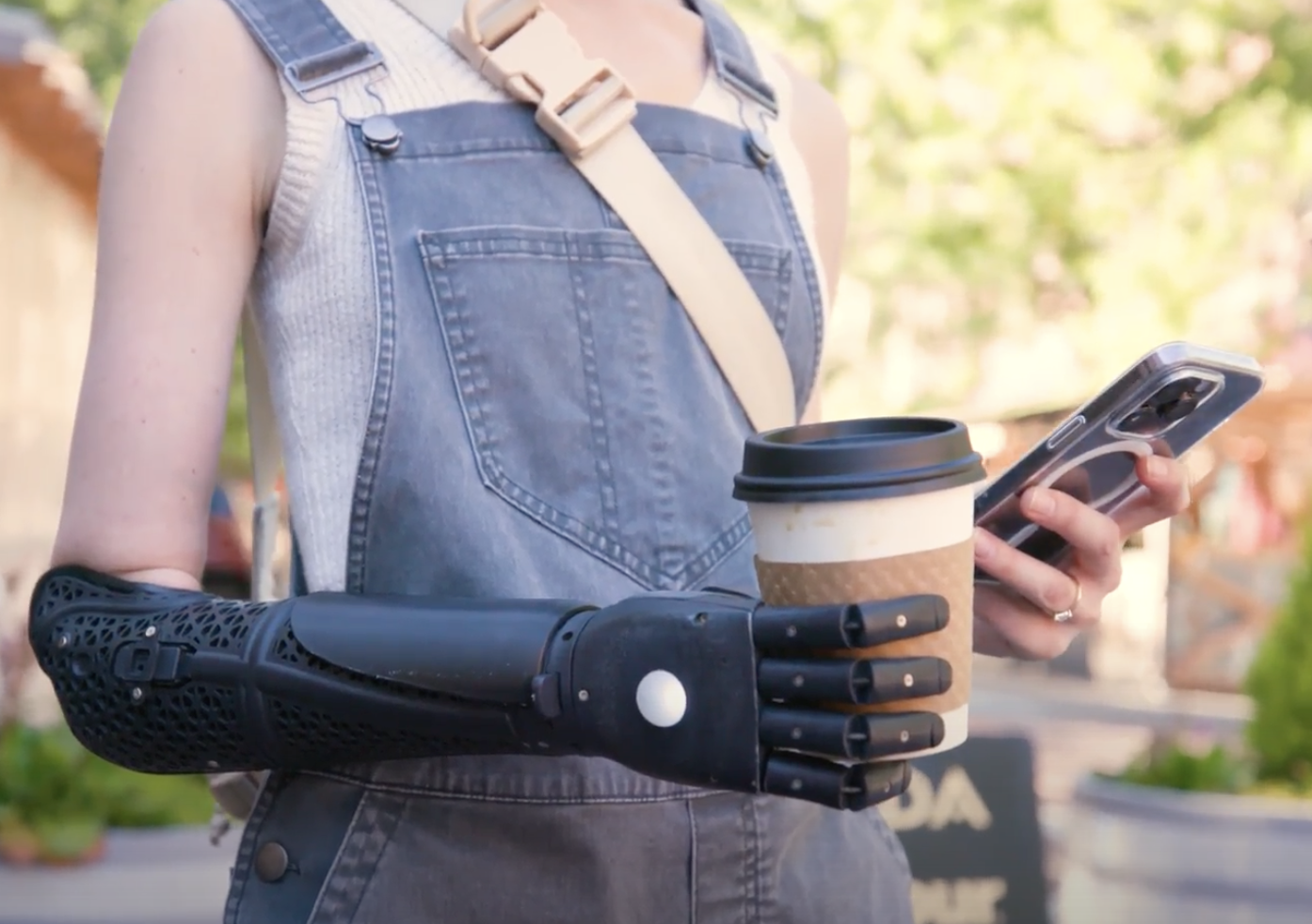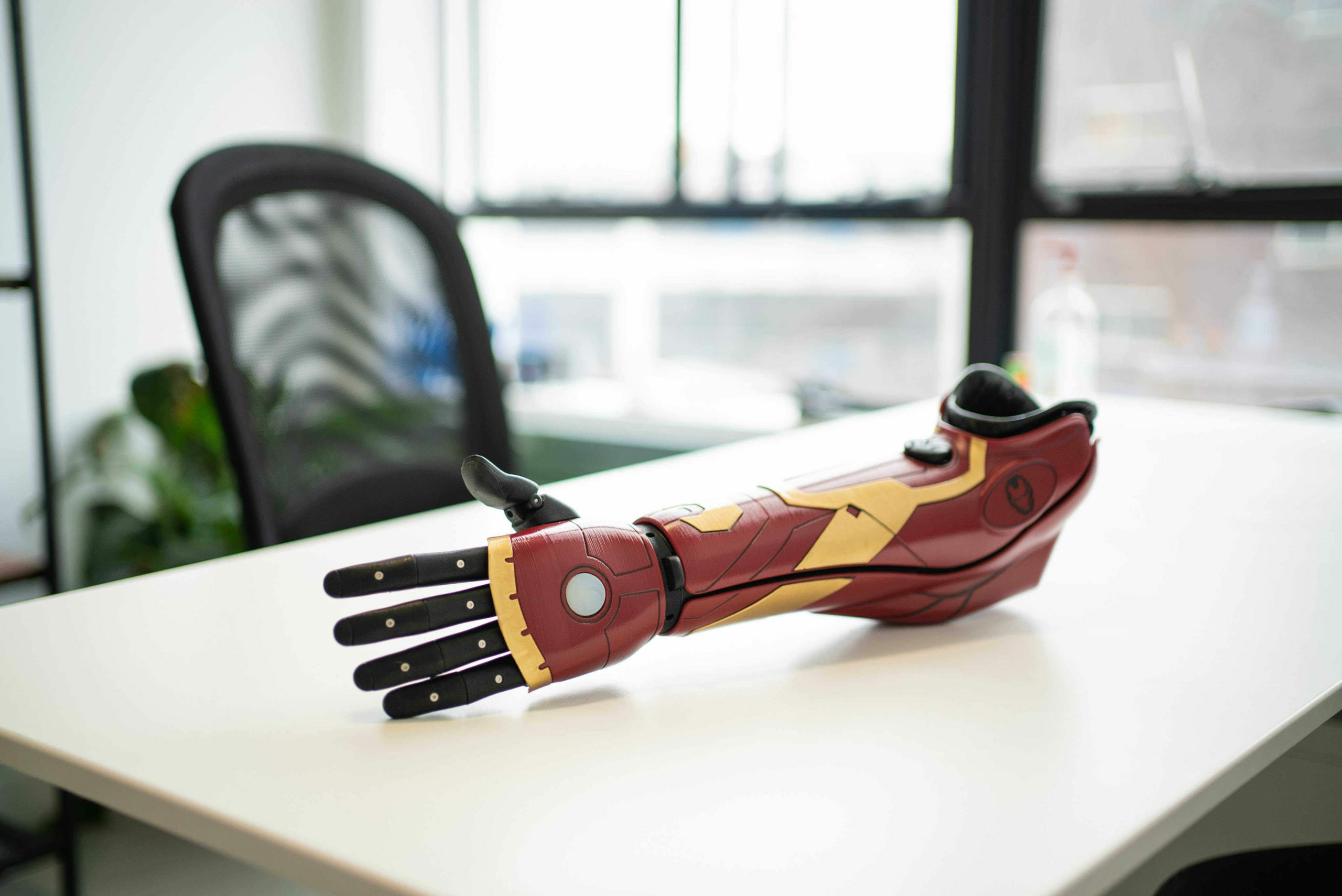Two years with the Hero Arm – A Q&A with Natalie Grazian
25th August 2023

25th August 2023

Since its creation in 2014, Open Bionics has been hard at work producing Hero Arms for upper limb amputees across the world. Each day, the world becomes more and more bionic. Unique upper limb amputees are learning how to integrate their Hero Arms into their everyday lives, whether that be using their prosthetics to cut food in the kitchen, walk their dog, or type on a keyboard. But one crucial aspect of the bionic journey that Open Bionics values in each user is keeping them in the fold. User feedback, check ins, and brainstorming ideas for the future are important. We want users to know that their aftercare and experiences after time has passed since delivery is a pillar of our vision. We don’t want our community to go unheard.
Recently, the Open Bionics team had the opportunity to sit down with Hero Arm, Natalie Grazian, who has been wearing her Hero Arm since 2021.The company joined the Q&A on Google Meets ready to learn more about her Hero Arm experience and gain valuable feedback on how and how Open Bionics can build and grow moving forward. Natalie is a congenital amputee and resident of the Seattle, Washington area. She had her Hero Arm fitted through the Hangar Clinic. She is currently studying occupational therapy and is a camp volunteer through Camp No Limits. In her spare time Natalie enjoys yoga, drumming, reading, and using her Hero Arm to crochet.

First off, Natalie expressed to the team that her journey with limb difference early on was defined largely by her desire to fit in with society, which led her to using a passive, skin toned prosthesis that offered no real accommodations to her needs.
“It was purely cosmetic. It may have done good things for my posture and back, but the only reason I wore it was to make an impression before someone noticed I was missing my hand.” Natalie explained. Find out how Natalie gained confidence to embrace her full-self in her recent guest post for Open Bionics.

During 2021, Natalie came to a change of perspective, and began researching bionic limbs that would ‘allow for functionality’ but look just different enough to allow her to uniquely not fit into society in a positive way. Natalie said that the top result when using those search parameters was Open Bionics. “The social part and the function part are so intertwined and that’s very interesting. The Open Bionics team were especially curious to know how the Hero Arm has played a role in Natalie’s self-expression and what has made it most valuable to her thus far, to which Natalie expressed that it isn’t always the functionally, but rather how the prosthesis looks and makes her feel.
“A really basic functional grip that lets me carry two things at once, and the fact that it just looks cool. I think Open Bionics is onto something fantastic with making a lower-cost hand that has fewer grips. Taking it a step further, I don’t think it has to look like a five-fingered human hand.” Natalie said.

“The Hero Arm has such a strong aesthetic — it’s bold, elegant, classic-looking, a little cyberpunk, and those same design principles could be applied to a simpler myoelectric terminal device that isn’t hand-shaped,” she said. “If it looks amazing and has a reliable single grip, it doesn’t matter to me what shape it is.” Natalie shared.
We are also always keen to learn about the outside clinic process, and Natalie shared that her prosthetist had her back the entire way while being fitted for her Hero Arm.
“My prosthetist was fantastic, they had actually fitted someone else there recently with a Hero Arm and they really liked it,” she said. In addition, and of utmost importance in a prosthesis fitting journey, Natalie explained that her prosthetist also helped her navigate daunting insurance hurdles, something that amputees unfortunately face too often than not.
“
The Hero Arm has such a strong aesthetic — it’s bold, elegant, classic-looking, a little cyberpunk.
”
“It was fascinating that they wanted to know if I could open a jar beforehand,” Natalie said. Her answer was no. “It makes me think that insurance doesn’t know what to ask or what is actually useful.” she shared. After a nine-month process of communicating with insurance, Natalie was denied, with the reason being that the Hero Arm wasn’t medically necessary and that not enough research exists to prove that it is.
“The folks at Hangar told me not to worry about it, that they’d handle it,” Natalie said. In addition, Natalie expressed to us that she feels lucky to be someone who gets the opportunity to use a Hero Arm, and that the opportunity needs to be continually extended to those who are facing uphill battles when it comes to prosthetic accessibility. “I think about that a lot, and I’m happy that is part of your mission.” Natalie said.

Pivoting to asking us some questions, Natalie expressed interest in learning more about what is most useful about the SideKick Hero Arm app. Within the app, users have access to training features that focus on muscle strength, training videos that highlight specific activities you can use the Hero Arm for, as well as grip sequencing depending on user preference, and light & haptic control. Connecting to Natalie’s bit about medical necessity and lack of research, the app also collects usage data that will be extremely beneficial in presenting the case for future insurance approvals.
The mental health side of disability also intrigues Natalie. She expressed that more proactive support is extremely important. “There’s so much mental health intertwined with disability, and from an OT (occupational therapy) perspective, those follow-ups could be really cool, really beneficial,” she said. “The Hero Arm is such a cool device, but it’s more than the sum of its parts, it becomes a part of the person.” Natalie expressed.
“
The Hero Arm is such a cool device, but it’s more than the sum of its parts, it becomes a part of the person.
”
Interestingly, Natalie and we agreed that prosthetics have a long way to go in terms of dexterity, and that the future looks interesting. For example, integrating more intricate movement and positioning of the fingers and wrist. Importantly, Natalie countered by reminding us that those systems should not come at the expense of comfort and weight. “Before there’s more grips, before there’s more motors – give it the comfort of really being able to wear it all day.” she explained.
Overwhelmingly, Natalie and we agreed upon a shared vision where people with limb difference have the funds, the means, and the resources to get this type of technology that leads to societal acceptance and emotional wellbeing not only while using a Hero Arm, but just overall.
“I’ve noticed such a societal difference towards me when I’m wearing my Hero Arm,” Natalie said. “That raises the standards for everyone, a lot of people with disabilities don’t have those resources and become more marginalized, so I’m excited yet cautious for the future, but happy to know that you (Open Bionics) are thinking about these things too.” she shared.

If you are a Hero Arm user who is interested in participating in a user chat with our team, please register interest with Lucas Slusher by sending him an email at [email protected]. If you’d like to trial the Hero Arm, click on the link below to register your interest and begin your bionic journey with us!

The Hero Arm uses myoelectric sensors which detect underlying muscular contractions generated from specific muscle groups in the arm. These are then amplified and converted into intuitive and proportional bionic hand movements. Each Hero Arm is custom-built for optimal comfort, and fits like a glove.